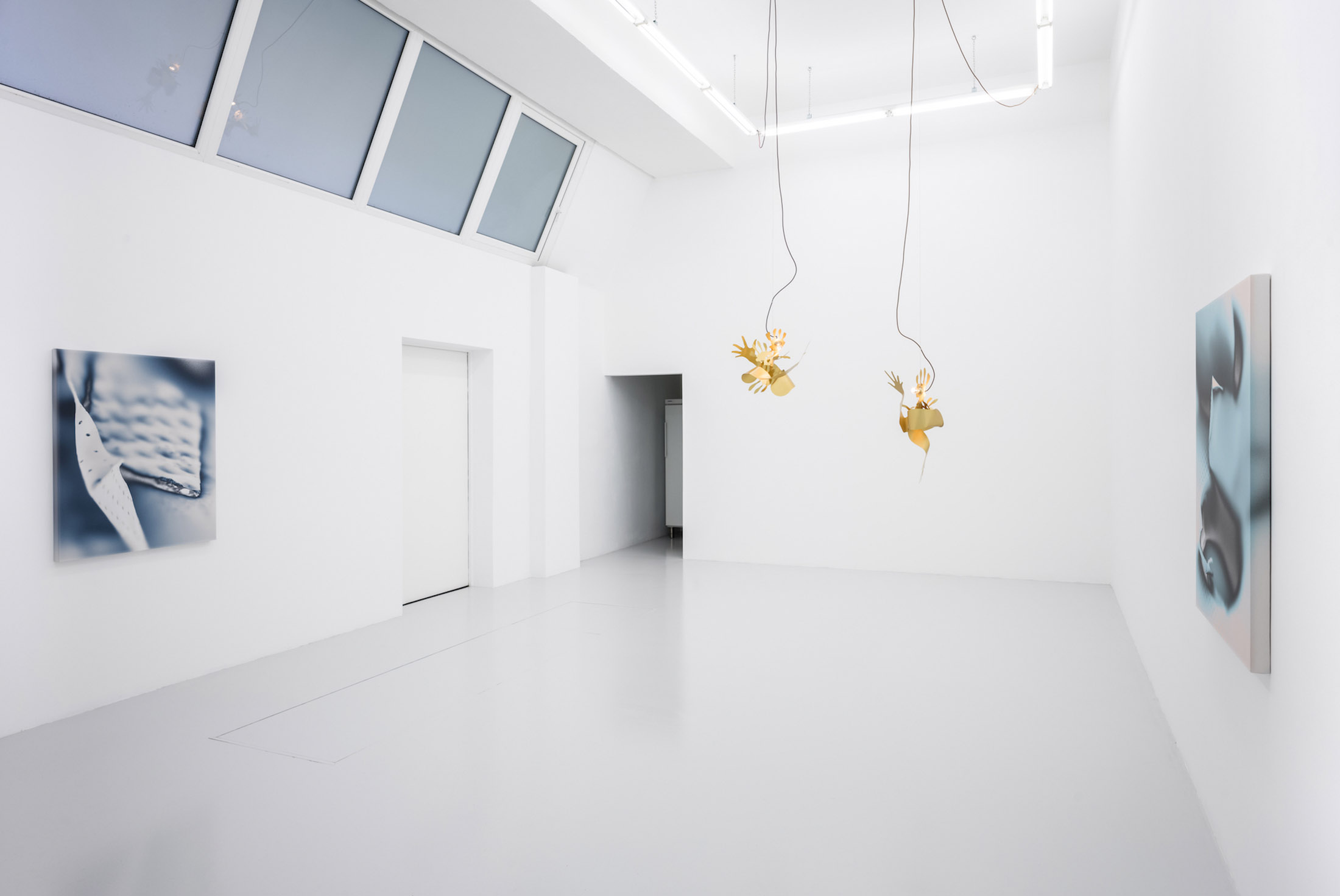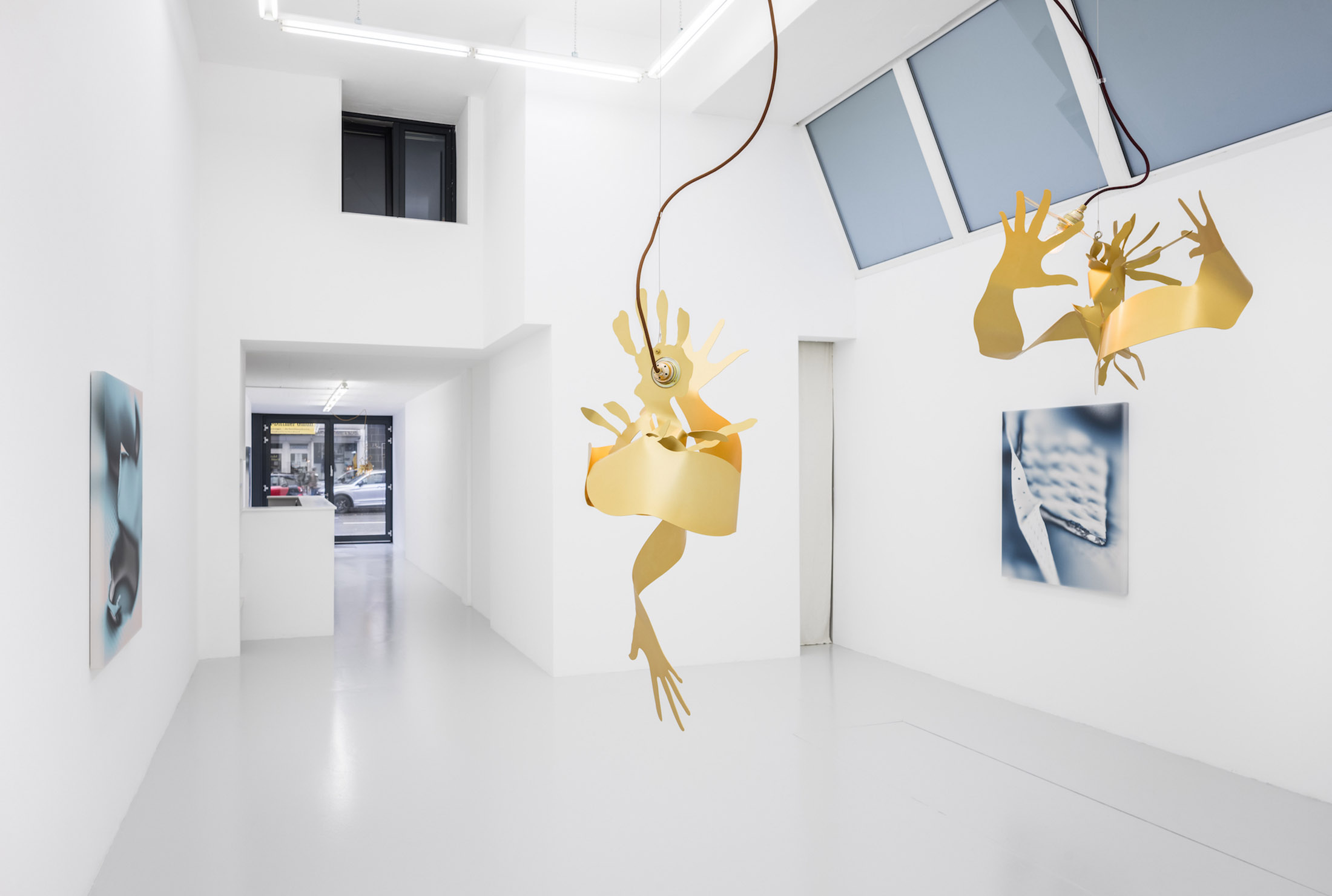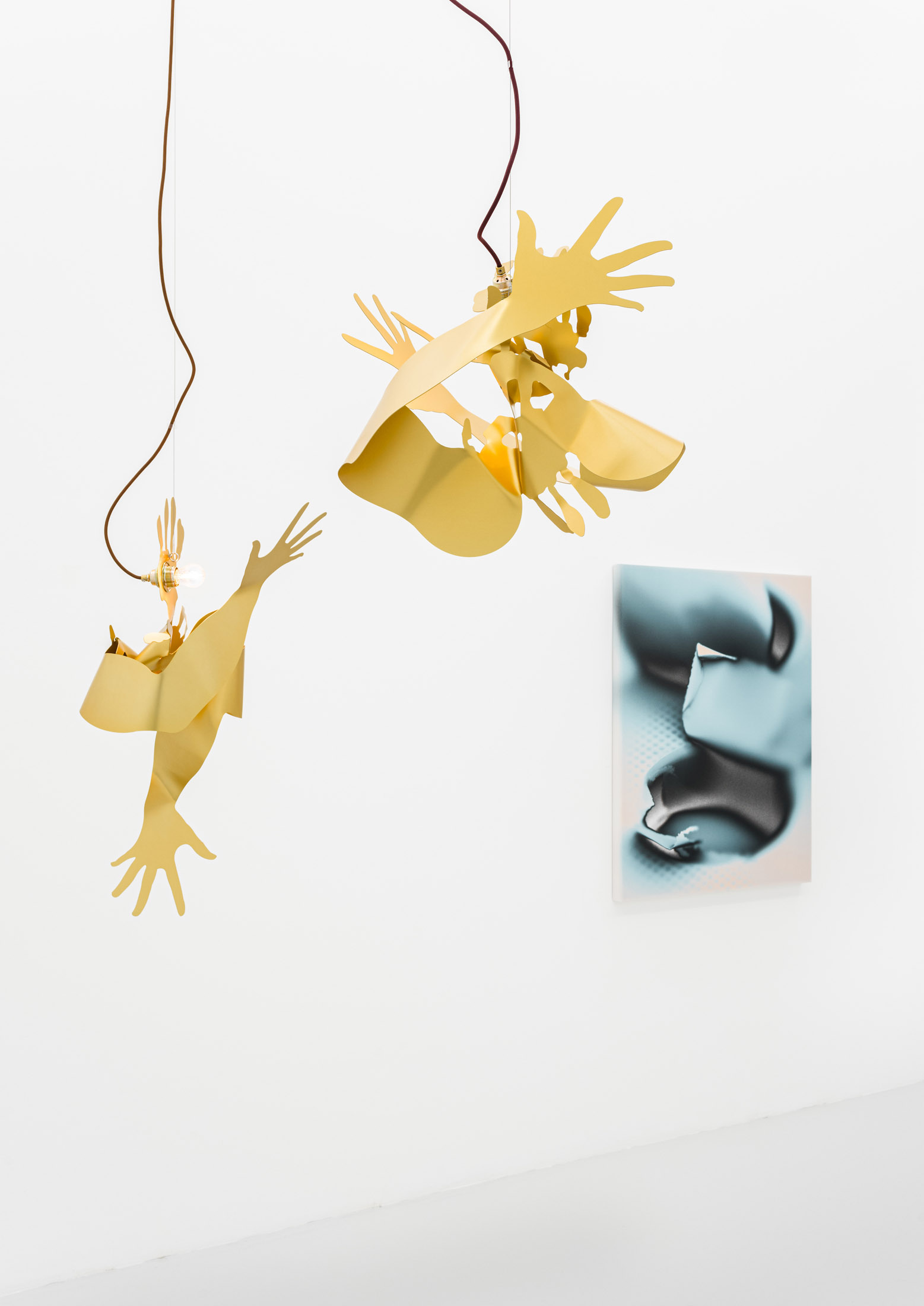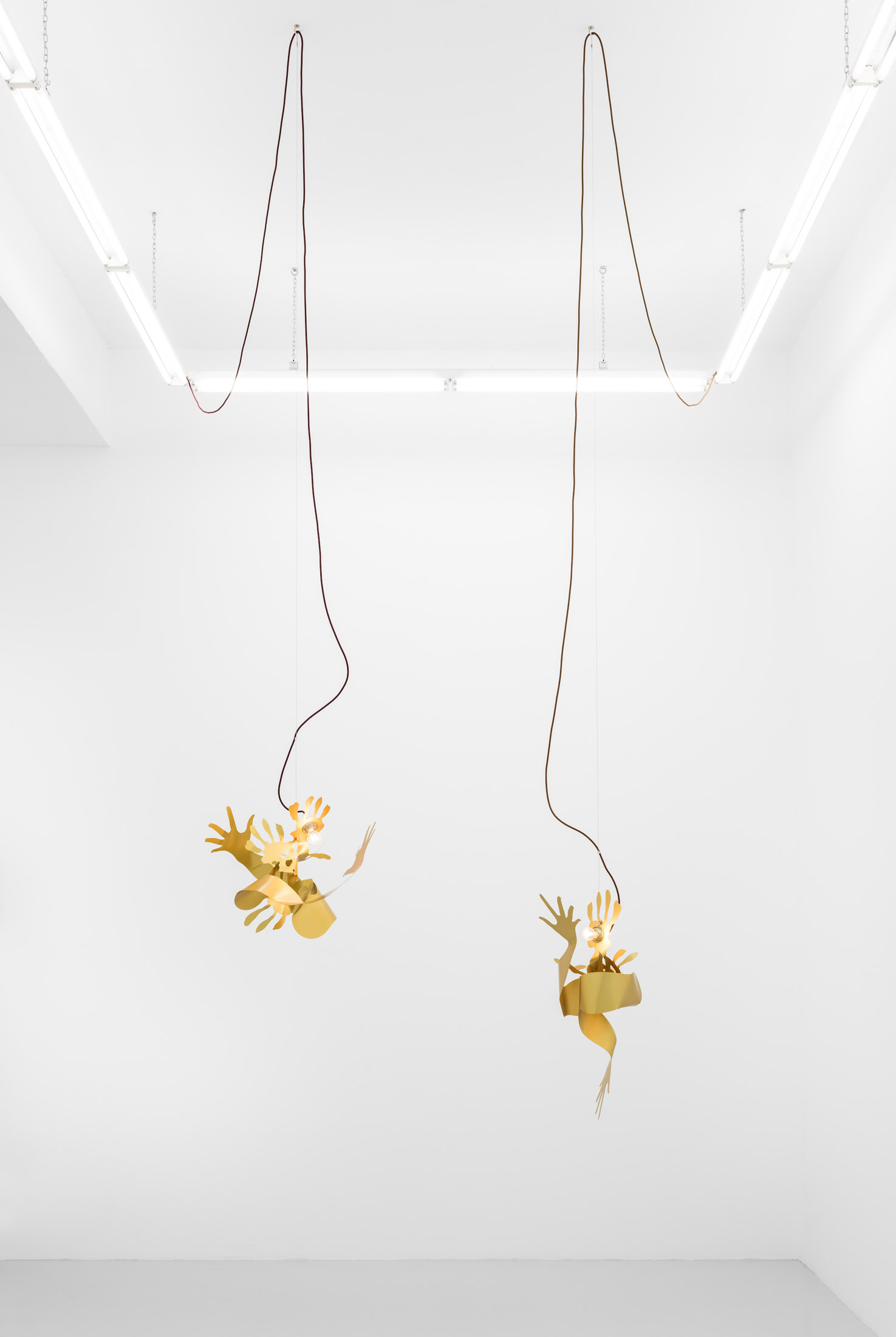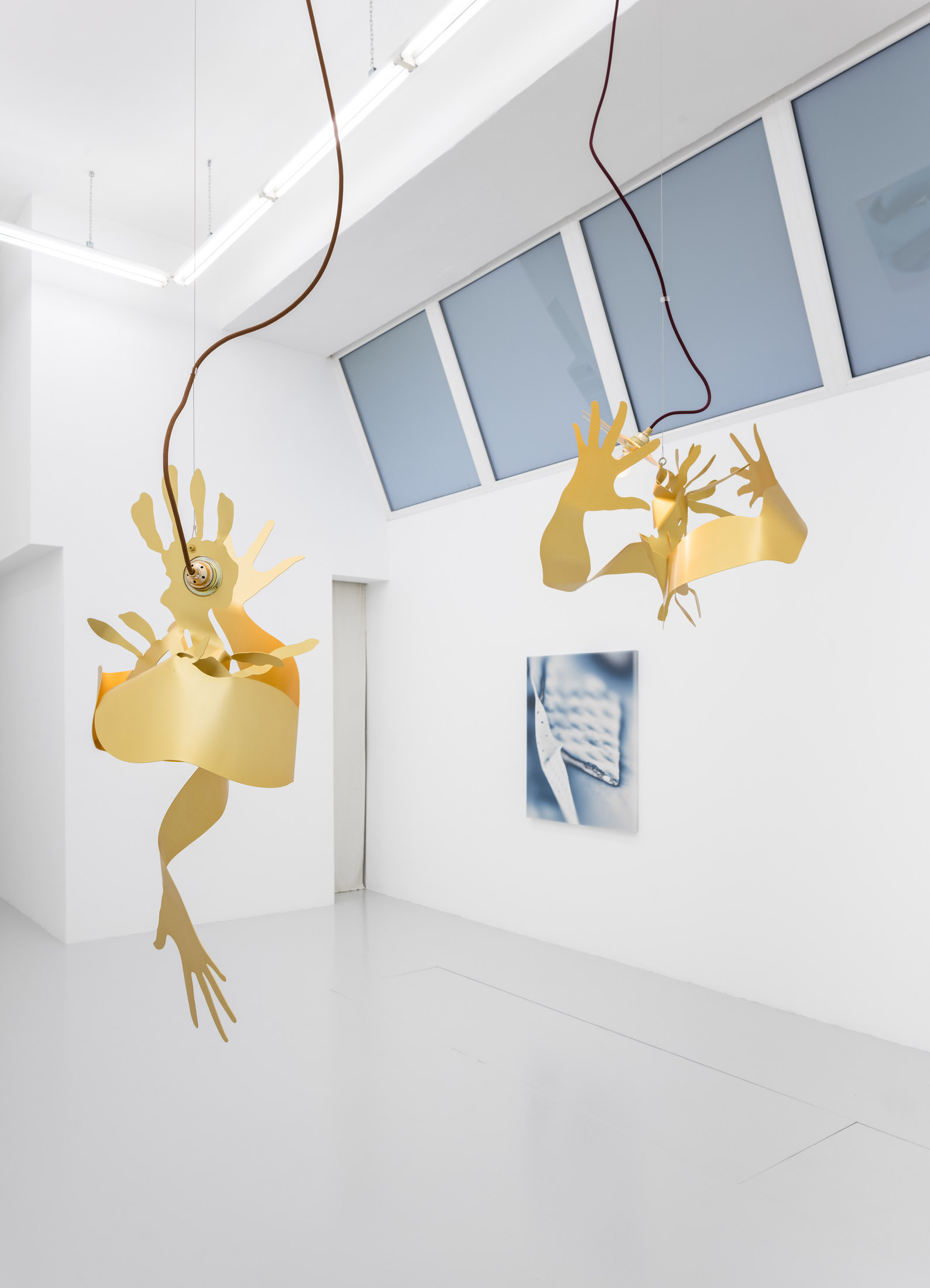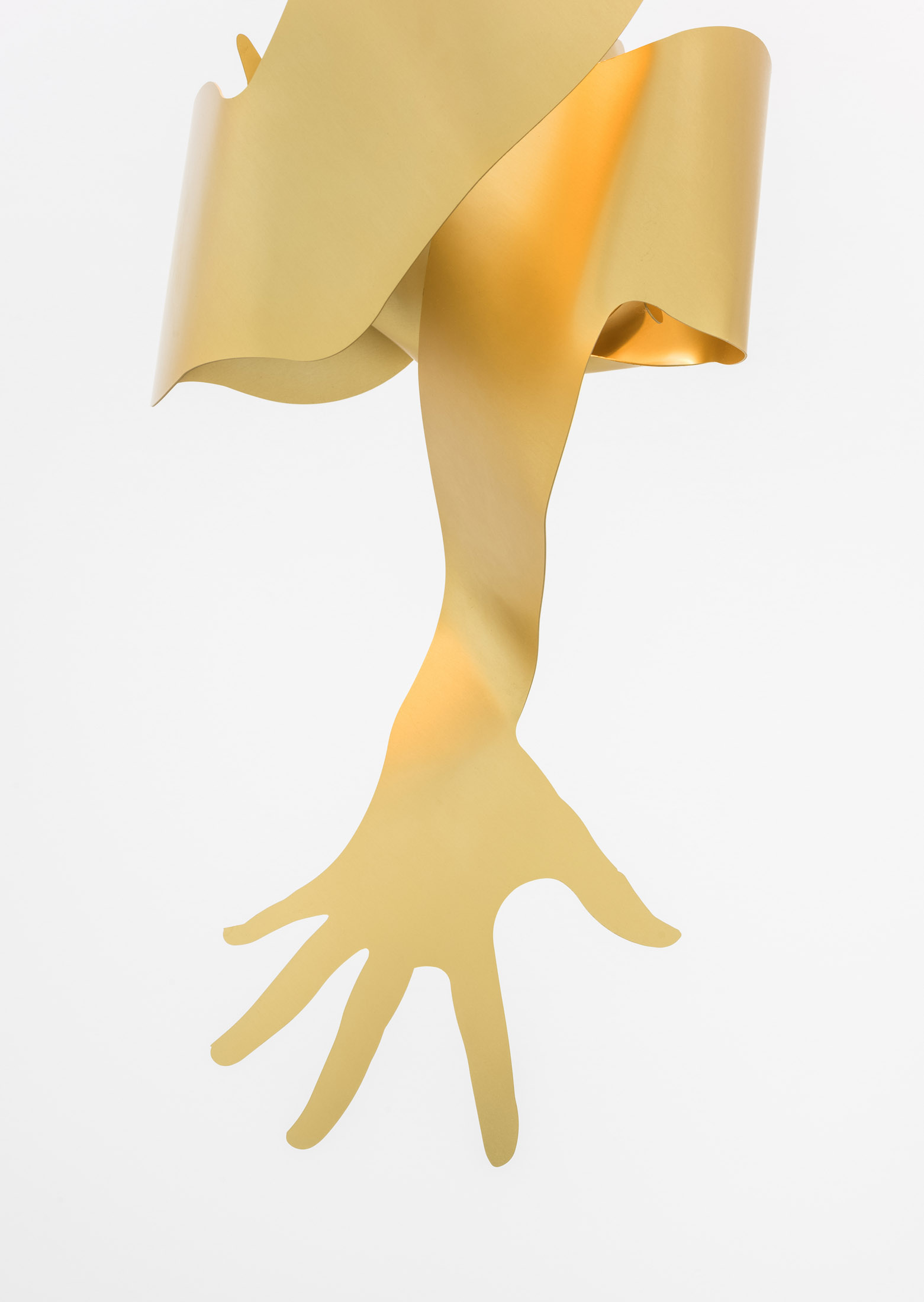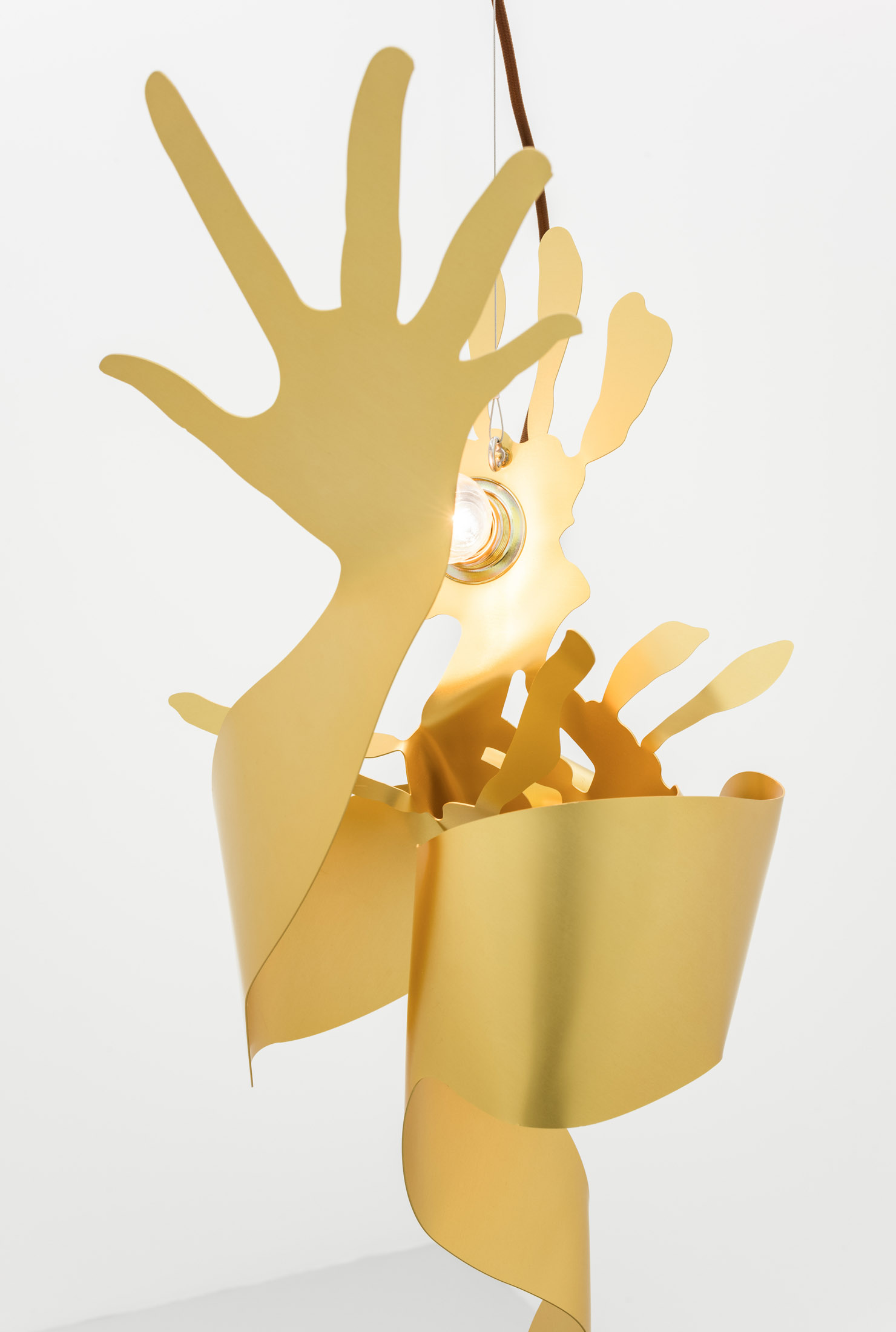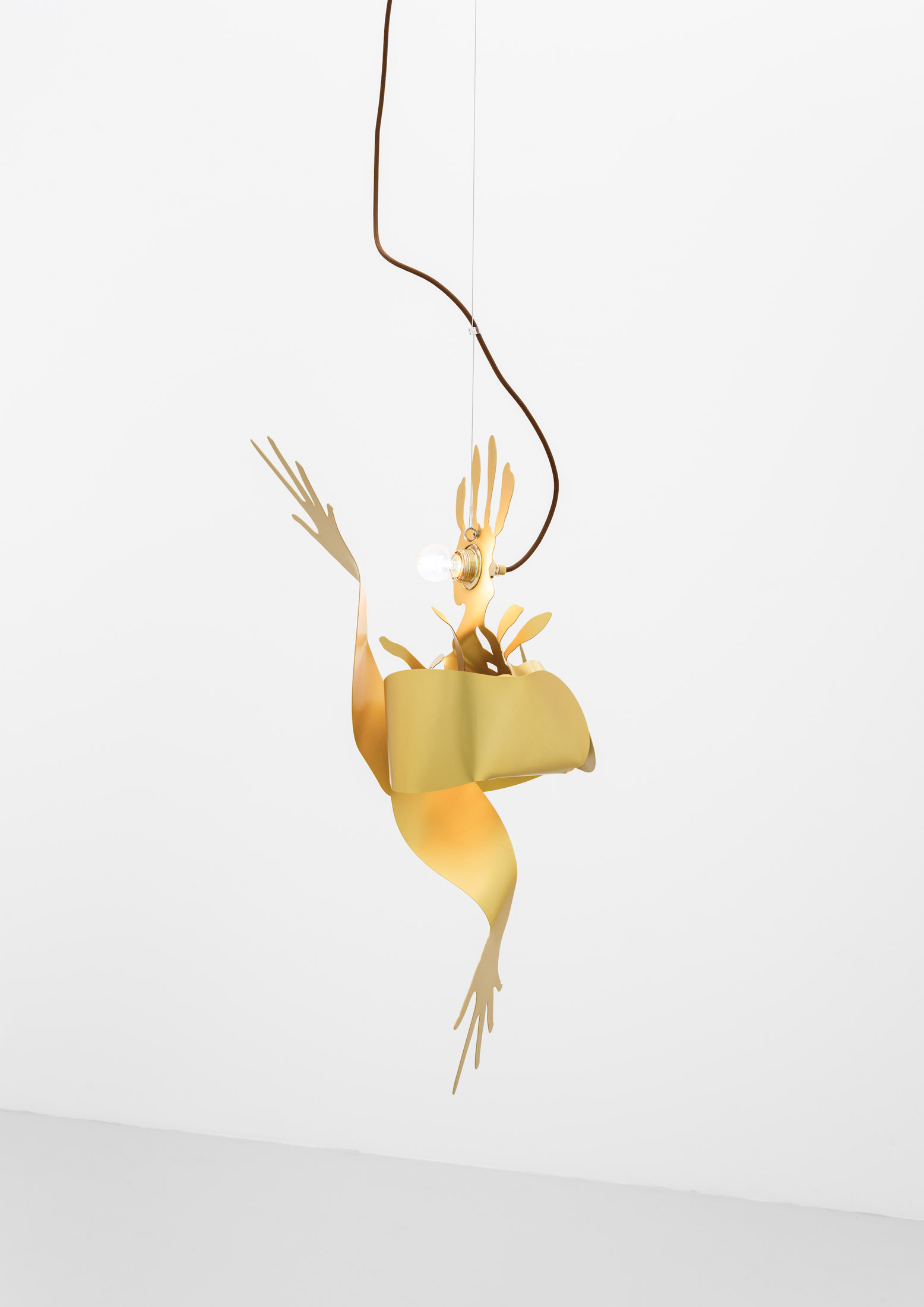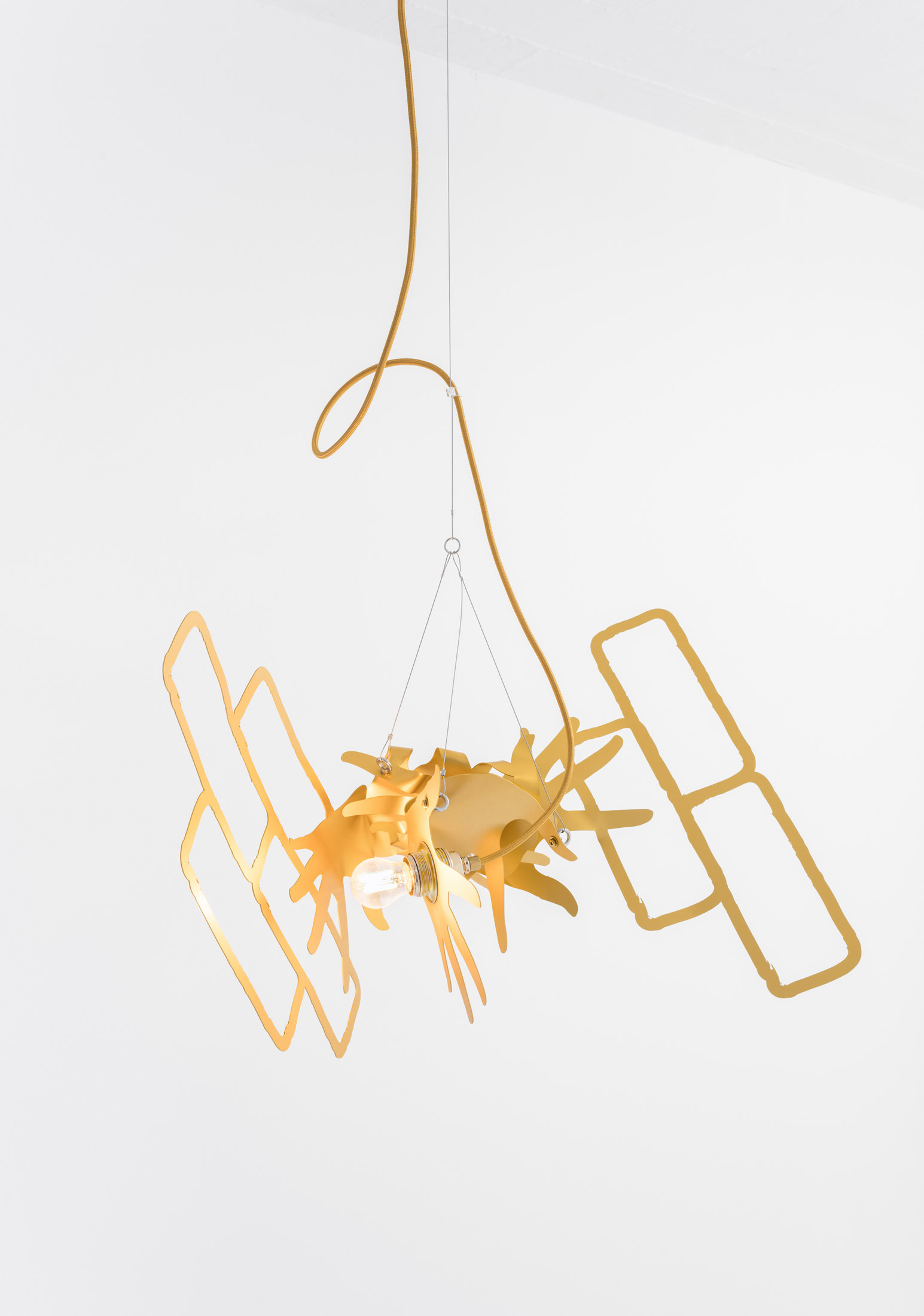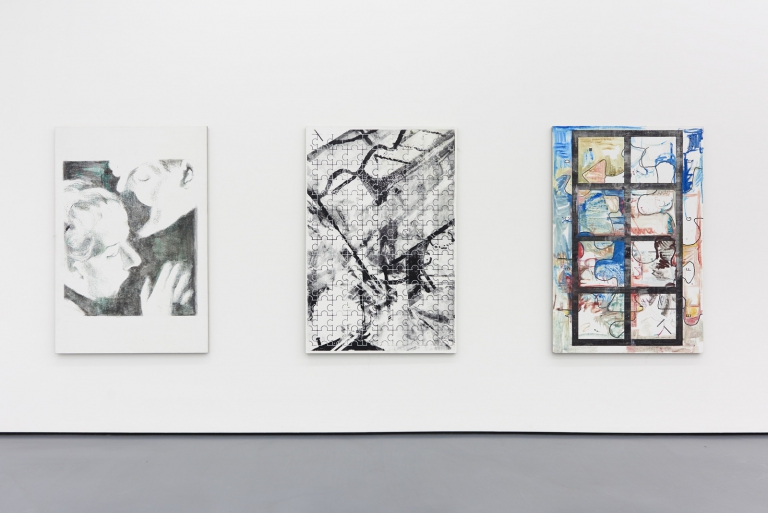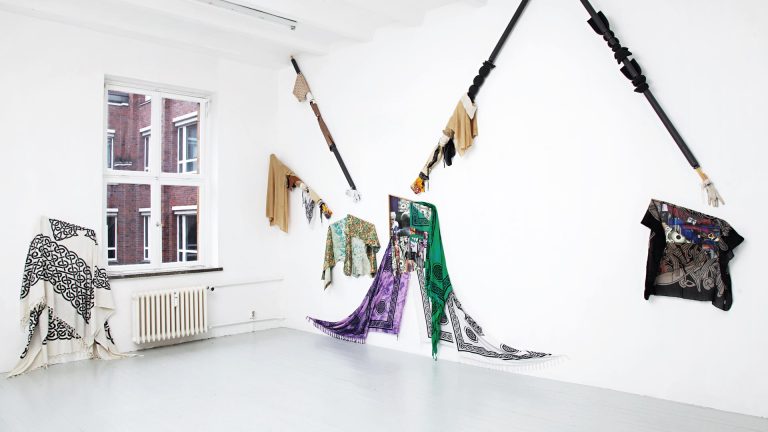Artist: Nicolas Pelzer
Exhibition title: Fingers and Concaves
Venue: fiebach, minninger, Cologne, Germany
Date: October 28 – December 22, 2023
Photography: ©Martin Plüddemann / all images copyright and courtesy of the artist and fiebach, minninger
An organism we can no longer identify as a machine?
Metallic hands writhing, a gesture akin to flames. Aluminum surfaces catch the light as they mingle “[a]nd pour their diamond fires in mine eyes[.]”1 Shadows intermittently veil the brilliance, in doing so, contrasting the golden glow—abstract spatiality of anodized worlds. Through bending these expressive gesticulations emerge; it would appear the splaying of fingers induces self-amorphosis. Perhaps this is also a result of the light source, which, in the round dance of the hands, exerts its power and causes matter to melt. In the background, stranded wire and cable clamps. They brace and support, form the scaffolding to which the dance of light is affixed. Likewise, it can be argued—echoing Leroi-Gourhan—that their constitution itself readily identifies them as machine-made. Whereas ropes were once handmade, “there was […] an exteriorization of muscle power”2 and the apparatus annexed human proficiency. As much as aluminum captivates with its life-like contours and figurative design, it too is wholly alienated from the notion of human skilled craftsmanship. Bundled light and computer-aided design are integral to its creation. Could this be why the hand cautions us, warns us against “a mutation of the external organism which, in the human, substitutes itself for the human body[?]”3 An organism we can no longer identify as a machine?
“Yes, I know, all for physics!
A doll with china eyes
Played cleverly with a fan,
Nearby a little cock in brass;
Both sang in unison
In a marvelous way,
Danced, gossiped, seemed to live.”4
Just as the golden contour of the clinker brick alludes to the craftsmanship of the mason, the brick itself a testament to mechanical production. Is it the interplay of hand versus technology we encounter in the blue-pigmented paintings as well?
What was once a cavity has lost its fit—no refill possible. The seal is broken, burst, and now rises like an ice floe out of Caspar David Friedrich’s frozen sea. After the devastation, a stillness settles in. The silence triumphs, invites contemplation of the magnitude of the destruction. But the image is a specter! Paradoxical blurs dematerialize, defying the laws of optics. Certain curves and protrusions delicately reveal features of an irregular network structure—wavy, crystalline, textured. Yet the fog of blur obscures these details. On the other hand, a perforated mesh extends with complete clarity around the craters—rhythmically, much like cobblestones. But here the pattern gradually dissolves into a radiant blur, as if light were pulverizing the material into dust. Like dust, the paint lies settled on the support, organizing itself into the motif—metafiction.
The genesis of the image is a 3D scan, its artifacts evident in the texture. And yet even the tattered edges show traces of that transition to the digital domain. The object was meticulously positioned in virtual space and subsequently rendered, a testament to the transcendence of mere optical precision. The color blue, symbolic of clarity and technology, not to mention calm and melancholy, takes center stage. Microcosm and macrocosm are interchanged, as is the shift from the profane (of manual origin) to the tragic (various layers of technical concealment).
“Press gently and evenly on the back of the blister pack, directly under the tablet you wish to extract. This should release the tablet from the blister without damaging it.”5
-Thomas Musehold, 2023
1Charles Baudelaire, “The Living Torch,” trans. Cyril Sco;, in: The Flowers of Evil (London: Elkin Mathews, 2011), retrieved from h;ps://www.gutenberg.org/files/36098/36098-h/36098-h.htm#The_Living_Torch.
2 André Leroi-Gourhan: “Gesture and Speech,” trans. Anna Bostock Berger (Cambridge, Mass.: October / MIT Press, 1993), 246.
3 Ibid.
4Jules Barbier (libre;o) and Jaques Offenbach (music), New Version of Les Contes D’hoffmann, trans. Charles Alfred Byrne (New York, Burden, 1905), retrieved from h;ps://www.gutenberg.org/cache/epub/15915/pg15915.txt. → Nicklausse is telling Hoffmann about Olympia, an automaton that is oben mistaken for a human being.
5 ChatGPT answer to the prompt: “Describe the removal of a pill from a blister.”


